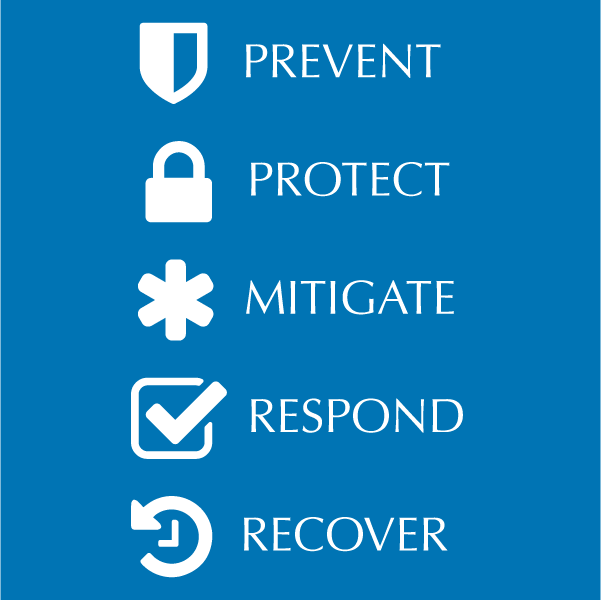Share Your Feedback
The REMS TA Center seeks your feedback to ensure that the Website is continually enhanced to meet your needs.
Presidential Policy Directive (PPD) 8
National preparedness efforts, including planning, are now informed by Presidential Policy Directive (PPD)-8, which was signed by the president in March 2011 and describes the nation’s approach to preparedness. This directive represents an evolution in our collective understanding of national preparedness, based on the lessons learned from terrorist attacks, hurricanes, school and IHE incidents, and other experiences.
PPD-8 defines preparedness around five mission areas: Prevention, Protection, Mitigation, Response, and Recovery.
-
Prevention
The capabilities necessary to avoid, deter, or stop an imminent crime or threatened or actual mass casualty incident. Prevention is the action IHEs take to prevent a threatened or actual incident from occurring.
-
Protection
The capabilities to secure IHEs against acts of terrorism and man-made or natural disasters. Protection focuses on ongoing actions that protect students, teachers, staff, visitors, networks, and property from a threat or hazard.
-
Mitigation
The capabilities necessary to eliminate or reduce the loss of life and property damage by lessening the impact of an event or emergency. In this document, mitigation also means reducing the likelihood that threats and hazards will happen.
-
Response
The capabilities necessary to stabilize an emergency once it has already happened or is certain to happen in an unpreventable way; establish a safe and secure environment; save lives and property; and facilitate the transition to recovery.
-
Recovery
The capabilities necessary to assist IHEs affected by an event or emergency in restoring the learning environment.
These mission areas generally align with the three timeframes associated with an incident: before, during, and after.
The majority of Prevention, Protection, and Mitigation activities generally occur before an incident, although these three mission areas do have ongoing activities that can occur throughout an incident. Response activities occur during an incident, and Recovery activities can begin during an incident and occur after an incident. To help avoid confusion over terms and allow for ease of reference, herein these are referred to as “before”, “during”, and “after.”



